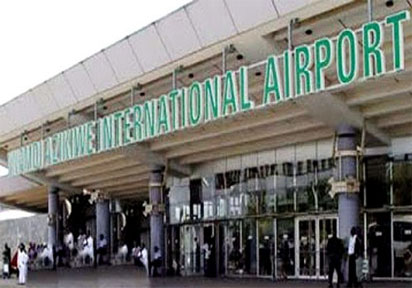Euclid Myke, Abuja
The International Air Transport Association (IATA) has announced its financial outlook for the global airline industry in 2025, showing a slight strengthening of profitability amid ongoing cost and supply chain challenges.
According to a paper presented by the IATA Director General, Willie Walsh to mark the 2024 Global Media Day in Geneva, Switzerland, the net profits for the global airlines industry in 2025 are expected to be $36.6 billion for a 3.6% net profit margin.
The IATA DG, who described the 2025 net profits as a slight improvement from the expected $31.5 billion net profit in 2024 (3.3% net profit margin), added that the average net profit per passenger is expected to be $7.0 (below the $7.9 high in 2023 but an improvement from $6.4 in 2024).
Operating profit in the coming year is also expected to be $67.5 billion for a net operating margin of 6.7% (improved from 6.4% expected in 2024).
The return on invested capital (ROIC) for the global industry is expected to be 6.8% in 2025, which is an improvement from the 2024 ROIC of 6.6% while the returns for the industry at the global level remain below the weighted average cost of capital.
Total industry revenues are expected to be $1.007 trillion, representing an increase of 4.4% from 2024, and will be the first time that industry revenues top the $1 trillion mark. Expenses are expected to grow by 4.0% to $940 billion.
Passenger numbers are expected to reach 5.2 billion in 2025, a 6.7% rise compared to 2024 and the first time that the number of passengers has exceeded the five billion mark just as cargo volumes are expected to reach 72.5 million tonnes, a 5.8% increase from 2024.
In his remarks, the IATA DG declared: “We’re expecting airlines to deliver a global profit of $36.6 billion in 2025. This will be hard-earned as airlines take advantage of lower oil prices while keeping load factors above 83%, tightly controlling costs, investing in decarbonization, and managing the return to more normal growth levels following the extraordinary pandemic recovery. All these efforts will help to mitigate several drags on profitability which are outside of airlines’ control, namely persistent supply chain challenges, infrastructure deficiencies, onerous regulation, and a rising tax burden.
“In 2025, industry revenues will exceed $1 trillion for the first time. It’s also important to put that into perspective. A trillion dollars is a lot, almost 1% of the global economy. That makes airlines a strategically important industry. But remember that airlines carry $940 billion in costs, not to mention interest and taxes. They retain a net profit margin of just 3.6%. Put another way, the buffer between profit and loss, even in the good year that we are expecting of 2025, is just $7 per passenger. With margins that thin, airlines must continue to watch every cost and insist on similar efficiency across the supply chain especially from our monopoly infrastructure suppliers who all too often let us down on performance and efficiency,” said Walsh.
Highlighting the broad benefits of growing connectivity, IATA said the most recent estimates showed that airline employment is expected to grow to 3.3 million in 2025.
He described the airlines as the core of a global aviation value chain that employs 86.5 million people and generates $4.1 trillion in economic impact, accounting for 3.9% of global GDP (2023 figures).
“Looking at 2025, for the first time, traveler numbers will exceed five billion and the number of flights will reach 40 million. This growth means that aviation connectivity will be creating and supporting jobs across the global economy. The most obvious are the hospitality and retail sectors which will gear up to meet the needs of a growing number of customers. But almost every business benefits from the connectivity that air transport provides, making it easier to meet customers, receive supplies, or transport products. On top of this, growth in aviation also contributes to achieving almost all the UN’s Sustainable Development Goals (SDGs),” said Walsh.
In the overview and outlook for 2025, IATA predicted that overall financial performance is expected to improve on the back of lower jet fuel prices and efficiency gains.
However, further increases are being held back by forced capacity discipline resulting from unresolved supply chain issues. This is limiting growth opportunities and driving up several cost areas, including aircraft leasing and maintenance. Net profitability will also be squeezed as airlines are expected to exhaust their tax losses carry forwards from the pandemic era, leading to an increase in tax rates in 2025.



